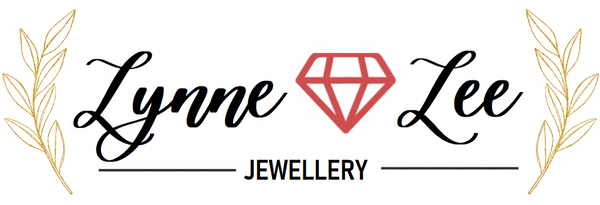Ancient Jewellery Legends 002 - EMPEROR HADRIAN'S DEIFICATION JEWELLERY
Share
Love That Cannot Be Removed
What happens when love becomes so powerful that it refuses to fade, even in the face of death? The story of Roman Emperor Hadrian and his beloved Antinous reveals how jewellery has always served as humanity's way of making the ephemeral permanent - transforming fleeting emotions into lasting treasures that outlive lifetimes.
The Emperor and His Beloved

In 130 CE, Hadrian ruled as the most powerful man in the known world. The Roman Empire stretched from Britain to Egypt, and his word was absolute law. Yet for all his imperial might, Hadrian's heart belonged to a young Greek man named Antinous. Their relationship defied the conventions of Roman society, but love rarely concerns itself with political propriety.
Antinous wasn't just a passing fancy - he was Hadrian's constant companion, traveling with the Emperor across the vast territories of Rome. Historical accounts describe a deep, genuine affection that transcended the typical patron-client relationships common in Roman culture. This was love in its truest form, unashamed and authentic.
Tragedy Strikes the Empire
The idyll ended abruptly in 130 CE when Antinous mysteriously drowned in the Nile River during one of their journeys through Egypt. The exact circumstances remain unclear - was it accident, suicide, or something more sinister? What we do know is that Hadrian's grief was so profound it sent shockwaves throughout the Roman world.
The Emperor's reaction was unprecedented. Rather than maintaining the stoic composure expected of Roman leadership, Hadrian openly mourned his loss. But this wasn't just private grief - it became a public declaration that would reshape how we understand love, memory, and the power of precious metals to preserve what matters most.
The Deification: Love Made Divine

In an extraordinary move, Hadrian declared Antinous a god. This wasn't merely honorary - it was a complete deification with temples, priests, and worship rituals. But perhaps most significantly for our story, Hadrian commissioned thousands of commemorative pieces to honor his beloved's memory.
Gold signet rings bearing Antinous's portrait were created across the Roman Empire. These weren't simple memorial pieces - they were declarations of love carved in precious metal, designed to ensure that Antinous would never be forgotten. Each ring was a vessel carrying Hadrian's grief, love, and determination to make their bond permanent.
The Rings: Symbols of Eternal Love

The deification rings featured Antinous's likeness carved in intricate detail - his youthful face, curling hair, and serene expression captured forever in gold. These signet rings served multiple purposes: they were memorial pieces, religious artifacts, and political statements all at once.
But beyond their official function, these rings represented something deeper. For Hadrian, they embodied love that could not be removed - not by death, not by time, not by the vastness of empire. They were his way of ensuring that what mattered most would endure long after flesh had returned to dust.
The Legacy: Thousands of Years Later
Today, examples of these rings can be found in museums across the world. The British Museum, the Metropolitan Museum of Art, and countless private collections house these ancient testimonies to love that refused to fade. Each piece tells the same story: that jewelry has always been humanity's way of making the temporary permanent.
Archaeological evidence suggests that thousands of these commemorative pieces were created - rings, coins, medallions, and statues - distributed throughout the Roman Empire. This wasn't just imperial propaganda; it was love expressed on a scale that matched the vastness of Hadrian's grief.
What This Means for Modern Jewellery
The story of Hadrian's deification rings reminds us that jewelry has never been just about decoration. From ancient betrothal rings to modern wedding bands, from memorial lockets to family heirlooms, the pieces we wear and treasure serve as vessels for our deepest emotions.
When we choose to immortalize love in precious metal and stone, we're participating in a tradition that stretches back millennia. We're acknowledging that some things are too important to let fade, too meaningful to trust to memory alone.
Creating Your Own Legacy Pieces
At Lynne Lee Jewellery, we understand that every piece we create has the potential to become someone's version of Hadrian's rings - a vessel for love that demands permanent expression. Whether it's an engagement ring that symbolises eternal commitment, a memorial pendant that keeps a loved one close, or a custom piece that captures a moment too precious to lose, we craft jewellery that carries meaning across generations.
The techniques may have evolved since Roman times, but the purpose remains the same: transforming the ephemeral into the eternal, making love permanent through the marriage of skilled craftsmanship and precious materials.
Conclusion: Love That Endures
Emperor Hadrian's deification rings teach us that true love doesn't accept the limitations of mortality. When faced with loss, we have a choice: let precious memories fade, or find ways to make them permanent. Hadrian chose permanence, commissioning thousands of rings that ensured his beloved would be remembered for millennia.
Today, those ancient rings remind us that jewelry is never just about the metal and stones - it's about the love, memory, and meaning we pour into these precious vessels. They're proof that when love demands eternal expression, precious metals and skilled craftsmanship can answer that call.
What would you choose to make permanent in precious metal and stone? Every piece tells a story - what story will yours tell?
